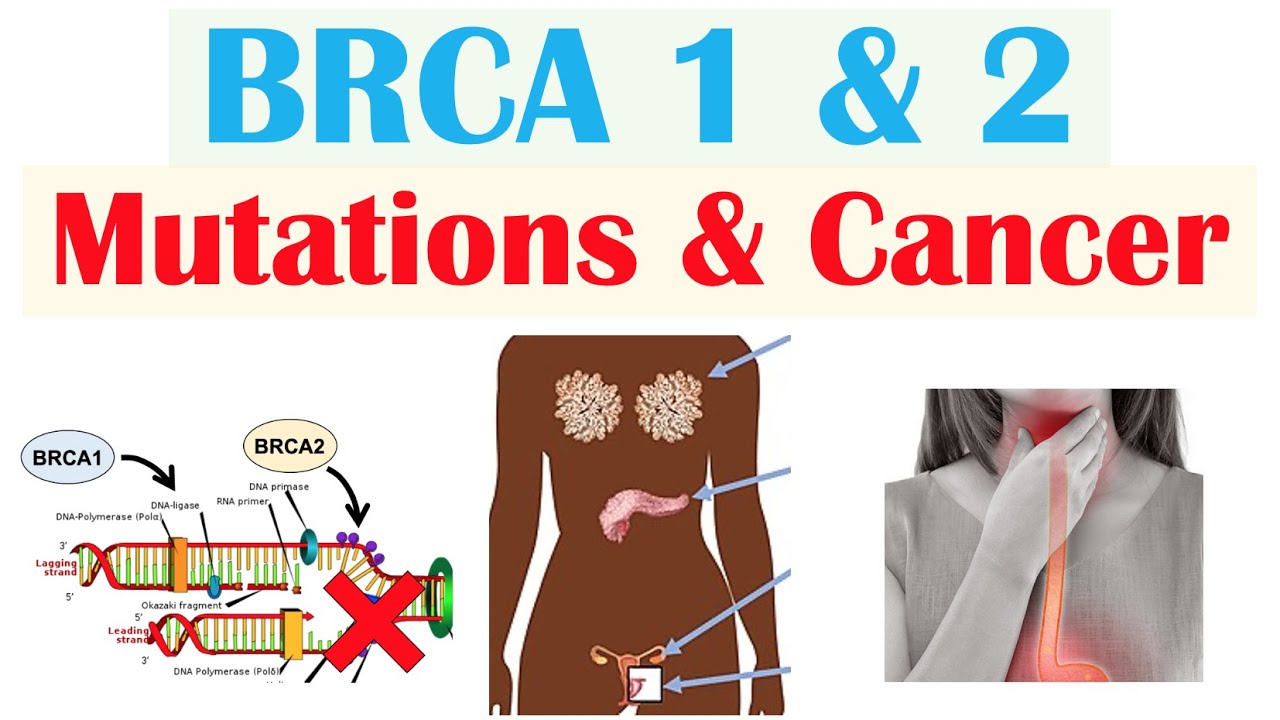Breast cancer remains one of the most prevalent cancers worldwide, and understanding its genetic origins has become crucial for early detection, prevention, and treatment. Among the key players in hereditary breast cancer are two important genes: BRCA1 and BRCA2. These genes are responsible for producing proteins that help repair damaged DNA. Mutations in either of these genes can significantly increase the risk of developing breast cancer, as well as other cancers such as ovarian and prostate cancer.
In this article, we’ll explore the differences between BRCA1 and BRCA2, their roles in hereditary breast cancer, and how testing for mutations in these genes can aid in early diagnosis and informed decision-making for patients and healthcare providers alike.
What Are BRCA1 and BRCA2?
BRCA1 (Breast Cancer 1) and BRCA2 (Breast Cancer 2) are tumor suppressor genes located on chromosomes 17 and 13, respectively. Their primary function is to produce proteins that repair damaged DNA and maintain the stability of the cell’s genetic material. When either gene is mutated, the cell’s ability to repair DNA becomes compromised, leading to an accumulation of genetic errors and an increased risk of cancer.
Both genes are most commonly linked to hereditary breast cancer, but they each have distinct characteristics, mutation patterns, and cancer risks. Let’s dive into these differences and examine how they impact individuals with these mutations.
Key Differences Between BRCA1 and BRCA2
-
Location and Genetic Composition
-
BRCA1 is located on chromosome 17 and contains 24 exons. It plays a crucial role in the repair of double-strand breaks in DNA through a process called homologous recombination.
-
BRCA2, on the other hand, is located on chromosome 13 and has 27 exons. It also plays a significant role in DNA repair, particularly in the repair of DNA cross-links and maintaining genome stability.
-
-
Cancer Risk and Types of Cancer
-
BRCA1 Mutations: Women with mutations in the BRCA1 gene are at a significantly higher risk of developing breast cancer, particularly before the age of 50. BRCA1 mutations are also associated with an increased risk of ovarian cancer, with a lifetime risk of up to 44%. Additionally, mutations in BRCA1 can elevate the risk of other cancers, including pancreatic and uterine cancers.
-
BRCA2 Mutations: Women with BRCA2 mutations also have an increased risk of breast cancer, but typically the risk is slightly lower than with BRCA1 mutations. BRCA2 mutations are more commonly associated with male breast cancer and also increase the risk of prostate cancer in men. Like BRCA1, mutations in BRCA2 can lead to an increased risk of ovarian cancer, though the lifetime risk is slightly lower than that of BRCA1.
-
-
Breast Cancer Characteristics
-
BRCA1-associated breast cancers tend to be more aggressive, often diagnosed at younger ages and characterized by a higher grade and triple-negative subtype. Triple-negative breast cancer (TNBC) does not express estrogen receptors, progesterone receptors, or HER2, making it harder to treat with standard therapies.
-
BRCA2-associated breast cancers, although still serious, are generally less aggressive than those linked to BRCA1 mutations. These cancers are more likely to be estrogen receptor-positive (ER+), which can be treated with hormonal therapies.
-
-
Inheritance Patterns
Both BRCA1 and BRCA2 mutations follow an autosomal dominant inheritance pattern, meaning that inheriting a single mutated gene from either parent is enough to increase the risk of developing breast cancer. However, BRCA1 mutations are slightly more likely to be inherited from the mother, while BRCA2 mutations can be passed down by either parent.
Role of BRCA1 and BRCA2 in Hereditary Breast Cancer
Hereditary breast cancer accounts for about 5-10% of all breast cancer cases. Women who inherit a mutation in either the BRCA1 or BRCA2 gene have a significantly higher lifetime risk of developing breast cancer compared to the general population. The risk can range from 45% to 90%, depending on the gene and other factors such as family history.
Men can also carry mutations in BRCA1 and BRCA2, although the incidence of breast cancer in men is much lower. However, men with BRCA2 mutations have an increased risk of developing breast cancer, as well as prostate cancer.
In addition to breast cancer, both BRCA1 and BRCA2 mutations also increase the risk of ovarian cancer, though the lifetime risk for ovarian cancer in BRCA1 mutation carriers is higher. BRCA2 mutation carriers may also be at increased risk for pancreatic cancer and melanoma.
Genetic Testing for BRCA1 and BRCA2 Mutations
Genetic testing can identify mutations in the BRCA1 and BRCA2 genes, helping individuals and healthcare providers assess cancer risk. Testing is especially useful for people with a strong family history of breast, ovarian, prostate, or pancreatic cancer, as well as individuals of Ashkenazi Jewish descent, who are at a higher risk for these mutations.
Medgenome Labs, a leader in genetic testing and research, offers comprehensive BRCA1 and BRCA2 genetic testing services. With advanced diagnostic tools, Medgenome Labs provides accurate and timely results, helping individuals understand their genetic risk for hereditary cancers and make informed decisions about their healthcare.
Preventive Measures for Individuals with BRCA1 or BRCA2 Mutations
For individuals found to carry mutations in BRCA1 or BRCA2, there are several preventive strategies to manage the elevated cancer risk:
-
Regular Screening: Enhanced surveillance through regular mammograms, MRIs, and clinical breast exams can help detect breast cancer at its earliest and most treatable stage.
-
Prophylactic Surgery: Some individuals opt for preventive surgeries, such as mastectomy (removal of the breasts) or oophorectomy (removal of the ovaries), to reduce the risk of cancer.
-
Chemoprevention: Certain medications, such as tamoxifen or aromatase inhibitors, may be prescribed to reduce the risk of hormone-related breast cancers.
-
Targeted Therapies: For those diagnosed with cancer, treatments like PARP inhibitors have shown promise in treating cancers associated with BRCA1 and BRCA2 mutations.
Conclusion
BRCA1 and BRCA2 mutations play a critical role in hereditary breast cancer and other cancers. Understanding the differences between these two genes, along with their associated risks, is essential for individuals with a family history of cancer. Genetic testing and counseling can help individuals make informed decisions about their health and take proactive steps to manage their cancer risk.
Medgenome Labs is at the forefront of genetic research and testing, providing essential services to help people understand their genetic risks and take control of their health. If you or someone you know is concerned about hereditary breast cancer, reach out to Medgenome Labs for expert guidance and testing options.



